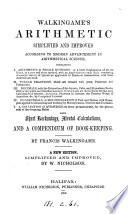 | Francis Walkinghame - 1859 - 200 pages
...the same denomination, and the third to the lowest name in it. Multiply the second and third terms ; divide the product by the first, the quotient will be the fourth proportional, or answer required. In the method of arranging the terms which is delivered in almost... | |
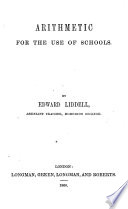 | Edward Liddell (writer on arithmetic.) - 1860 - 160 pages
...the first place. (4). Reduce (if necessary) the first and second terms to the same denomination. (5). Multiply the second and third terms together, and divide the product by the first term ; the result will be the answer required. We may either leave the fourth place in the statement... | |
 | John Budge - 1860 - 214 pages
...SHROUD-LAID ROPE.* Rule.—State the question as in direct proportion, square the first and third terms, multiply the second and third terms together, and divide the product by the first. EXAMPLE. How many standard yarns, or threads, are there in a 14-inch capstan rope ? As 3 : 20 : : 14... | |
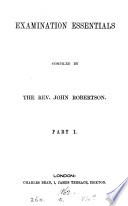 | John Robertson (LL.D., of Upton Park sch.) - 1861 - 140 pages
...less in the second term, according as the answer ought to be more or less than the third term. Then multiply the second and third terms together, and divide the product by the first. Compound Proportion or Double Rule of Three consists of several simple proportions united into one... | |
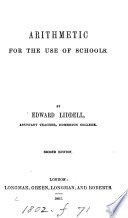 | Edward Liddell (writer on arithmetic.) - 1861 - 192 pages
...the first place. (4). Reduce (if necessary) the first and second terms to the same denomination. (5). Multiply the second and third terms together, and divide the product by the first term ; the result will be the answer required. We may either leave the fourth place in the statement... | |
 | Thomas Kentish (of London.) - 1861 - 372 pages
...6 on A — that is, A 2 4 Or, _ B 36 A 3 6 29. Now to solve questions of this kind numerically, we multiply the second and third terms together, and divide the product by the first. To put the above operation into a formula, therefore, it will stand as follows : 3_xjl 2 which is to... | |
 | Charles Davies - Arithmetic - 1861 - 496 pages
...place, and when less, write the less there, and the remaining term in the second place : III. Then multiply the second and third terms together and divide the product by the first. This rule gives, when quantity and cost are considered ; quantity : quantity : : cost : cost. When... | |
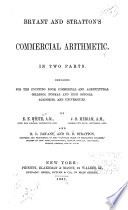 | Emerson Elbridge White - Arithmetic (Commercial), 1861 - 1861 - 348 pages
...the second term, and the greater for the first. Then divide the product of the second and third terms by the first; the quotient will be the fourth term, or answer. !•: xu in j. i .- -i . 2. If 5 peaches cost as much as 7 apples, how many apples can you buy for... | |
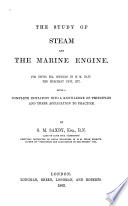 | S. M. Saxby - Marine engines - 1862 - 200 pages
...2 : 5 :: 6 : 15 and in this case the 15 was found by the Eule of Three : the rule in which is — " Multiply the second and third terms together, and divide the product by the first, and the quotient will be the answer." 4. But we must know what this " Eule of Three " really is, and... | |
 | Olinthus Gregory - 1863 - 482 pages
...same denomination ; and if the second term be a compound one, reduce it to the lowest name mentioned. Multiply the second and third terms together, and divide the product by the first, and the quotient will be the answer, in the same denomination to which you reduced the second term.... | |
| |